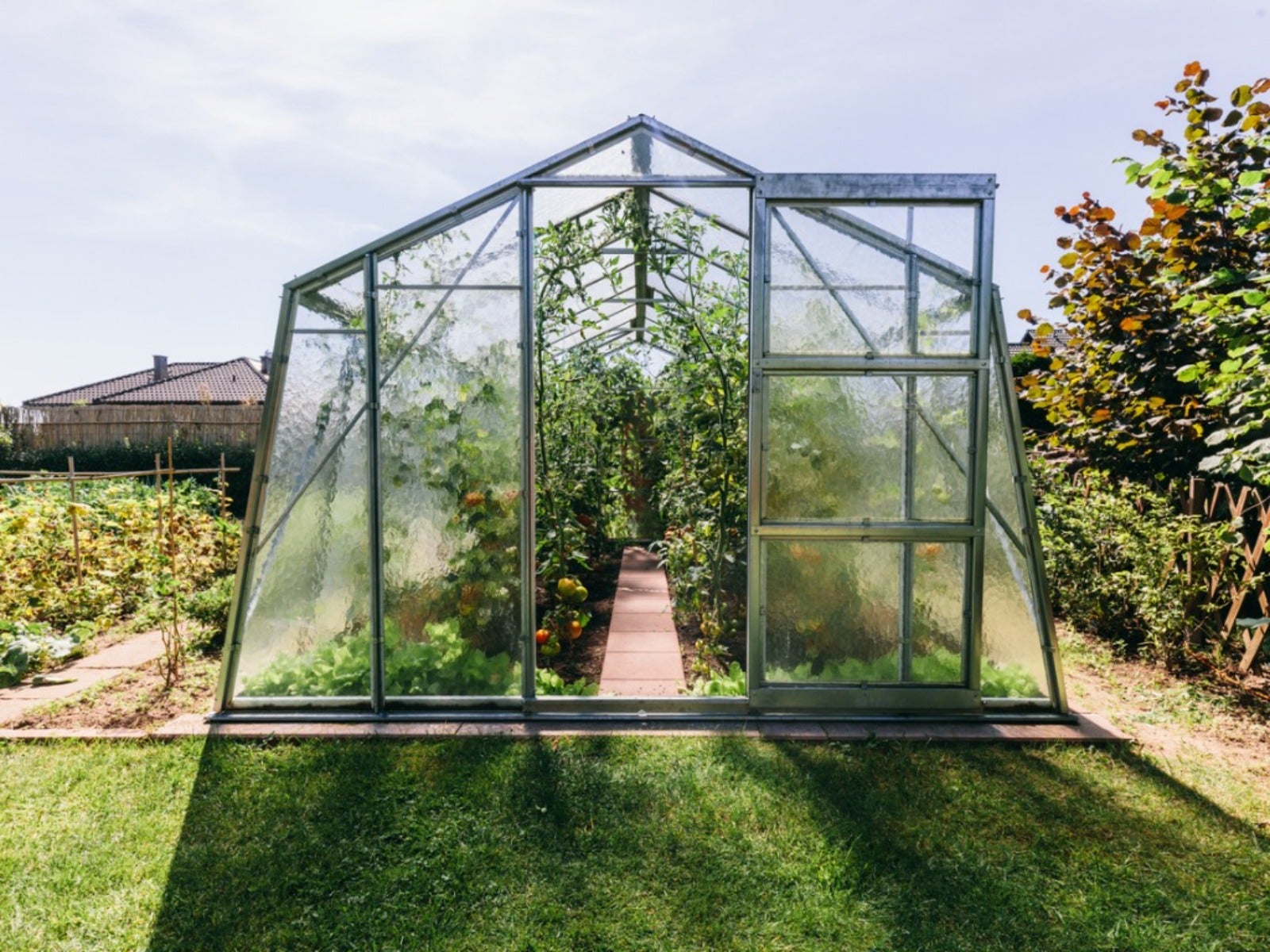Geothermal Greenhouse – A Sustainable Way To Grow Year Round


There are many ways to get a jump start on growing and to extend the season. Hoop houses, cold frames, water walls, and greenhouses are typical examples. The traditional greenhouse is usually heated using an outside source, but a more sustainable and energy efficient way is through geothermal greenhouse design. Using geothermal heat for greenhouse warming captures the energy stored in the soil and groundwater. The practice recycles solar energy and is a cost effective method of keeping plants warm.
The energy used to heat a traditional greenhouse accounts for the third largest cost in such systems when using electricity. Some gardeners defray the expense by installing solar panels and harvesting natural energy. Another way to minimize cost is by using geothermal greenhouse heating. Commercial growers using this method estimate they save 80 percent of operating fuel costs. That is a significant savings and contributes to the conservation of resources. The home gardener can also create geothermal warming by either setting up an active system with a heat pump and refrigeration cycle, or a passive system with fewer components.
Greenhouse Geothermal Heat Classifications
Geothermal heat comes in 3 categories.
- The first is a low temperature which is 50 degrees Fahrenheit (10 C). This temperature is reliably found about 10 feet (3.5) underground. Harnessing this heat level requires the use of a heat pump in various configurations.
- The next heat level is medium which spans 140-300 degrees Fahrenheit (60-149 C). This heat comes from thermal wells and springs that occur naturally in certain parts of the world.
- The third category is high temperature, or over 300 degrees Fahrenheit (149 C). Such extreme heat stems from geysers and is not standardly available for home gardeners.
In most regions, low temperature heat is the most feasible. Before considering installing the components necessary for harnessing this natural heat, it is best to consider the payback period and the amount of fossil fuel that can be saved. In many cases, 10 years is the estimated payback time.
Parts for a Geothermal Heating Greenhouse
An open loop geothermal heating system that harnesses energy from deep in the soil requires several components.
- First is a geothermal heat pump unit which will circulate the cool air to warm soil in winter and vice versa in summer. This helps retain a consistent temperature in the structure.
- To use this pump effectively, tubing needs to be installed under the structure to circulate the heat.
- Accompanying the pump are a solenoid valve, transformer, and water pump.
A closed loop system requires many more parts. The open loop will also require a thermostat, tubing or hose kit, manifold, a non-pressurized flow center, and adaptor kits. A closed loop system also relies upon propylene glycol which acts as an antifreeze for circulating water.
Basic Geothermal Greenhouse Design
It’s easiest to install a geothermal heating system prior to erecting the greenhouse. Trenches need to be dug 6-12 feet (1.8-3.6 m) below the surface of the soil. These trenches will house the hoses or tubing that will carry heat from the ground. Perforated tubes at a diameter of 4 inches (10 cm) will draw warm air from the soil and direct it into the structure. To maximize heat storage and cooling capacity, the greenhouse itself can be partially buried in soil. This acts as an insulator, allowing the system to work more effectively.
Gardening tips, videos, info and more delivered right to your inbox!
Sign up for the Gardening Know How newsletter today and receive a free copy of our e-book "How to Grow Delicious Tomatoes".
Once the pump is installed, it will draw warm, humid air during the day from the greenhouse. This air goes into the soil where it condenses due to the drop in temperature. This process releases energy in the form of heat, which is stored in the soil. In the evening, when temperatures drop, the warm air is drawn up from the soil, heating the interior. Such a loop system is efficient, but does take some know-how and planning. It’s a great idea to have a conversation with your local extension service for more information.

Bonnie Grant is a professional landscaper with a Certification in Urban Gardening. She has been gardening and writing for 15 years. A former professional chef, she has a passion for edible landscaping.
-
 Looking For Plants To Give You The Soft And Fuzzies? Try These 5 Fuzzy Leaf Plant Options
Looking For Plants To Give You The Soft And Fuzzies? Try These 5 Fuzzy Leaf Plant OptionsLovers of texture, drama, silver foliage and tactile plants will adore these special sensory garden additions. These fuzzy leaf plant options will leave you all aglow
By Susan Albert
-
 Get Ready For A Summer Of Hummers! Grow These Full Sun Hummingbird Plants and Flowers
Get Ready For A Summer Of Hummers! Grow These Full Sun Hummingbird Plants and FlowersIf you’re lucky enough to enjoy a sunny backyard, make sure you are maxing out on your pollinator opportunities and grow these full sun hummingbird plants and flowers
By Tonya Barnett